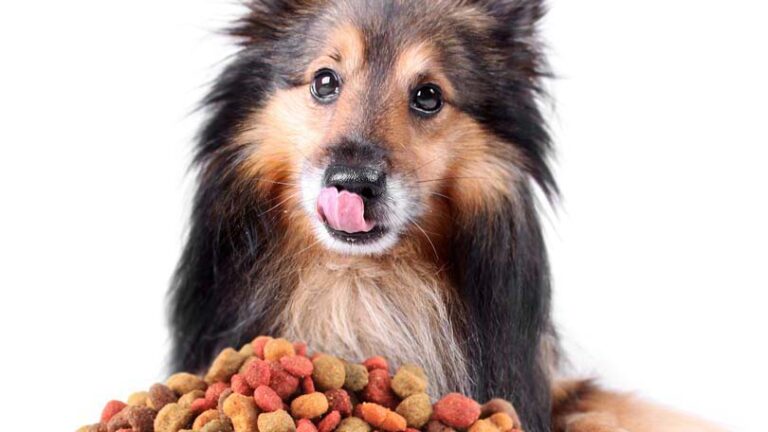Diabetes Mellitus and Dogs
Within the body, cells use glucose, a simple type of sugar, as their primary source of energy. However, glucose cannot pass easily out of the blood and into cells without the help of the hormone insulin. Diabetes mellitus is a disease that develops when either the body makes too little insulin or it cannot respond to normal amounts of the hormone. The pancreas, an abdominal organ that lies next to the small intestine, is responsible for manufacturing insulin.
Animals can develop two forms of diabetes mellitus. By far the most common type in dogs occurs when the pancreas stops manufacturing sufficient amounts of insulin. This is called type one diabetes, and dogs are often said to be “;insulin-dependent” because they almost always require treatment with an outside source of the hormone. In contrast, most diabetic cats and only a few dogs have type two diabetes, which occurs when cells don’t respond to the insulin that is being produced by the pancreas. While dietary changes, weight loss, and short-term insulin administration can “cure” some cats of their diabetes, this is rarely the case for dogs.
Type one diabetes can develop for a variety of reasons, but most commonly the dog’s own immune system attacks and destroys the pancreatic cells that are responsible for producing insulin. Genetics plays a large role in determining which individuals develop type one diabetes and which do not. Some breeds are at higher than average risk, including poodles, schnauzers, samoyeds, spitz, keeshonds, and some types of terriers. Diabetes usually develops in middle age, and females are twice as likely as males be affected. Obesity is the primary risk factor for the development of type two diabetes.
Whatever the cause of diabetes mellitus, the result is an excessively high level of glucose in the blood and a lack of adequate amounts of glucose within cells, which severely compromises the body’s ability to function.
Symptoms
A diabetic animal typically drinks and urinates more than normal and loses weight despite a good or even ravenous appetite. Diabetics are at an increased risk for infection, especially urinary tract infections, and with time almost every diabetic dog will develop cataracts. Dogs with diabetes are often weak and lethargic.
Diabetic ketoacidosis (DKA) is a life-threatening complication of severe and uncontrolled diabetes that occurs when the body has to rely almost entirely on the break down of fat stores for energy. Dogs with DKA can develop severe dehydration, electrolyte disturbances and die without prompt and aggressive treatment.
Diagnosis
Diabetes mellitus is not the only cause of increased thirst and urination and/or weight loss in dogs. To differentiate diabetes from other possible diseases, a veterinarian will start by asking owners about symptoms that they are noticing at home and performing a thorough physical exam. In diabetics, routine blood work and a urinalysis will usually reveal abnormally high levels of glucose, and diagnosis is fairly straightforward. However, stress can also increase blood sugar levels, so if confirmation is needed, a sample of blood can be sent to the lab for a fructosamine test. The results will tell the veterinarian what the dog’s glucose regulation has been like over the last few weeks. Additional tests may be necessary if the doctor suspects that complicating factors may be present.
Treatment and Prevention
Control of type one diabetes depends on the interplay between diet, exercise and insulin administration. Dogs should be fed the same amount of the same food (usually a high fiber food prescribed by a veterinarian) at the same time every day. Twice daily feeding is best, and treats should be kept to a minimum. The amount and timing of exercise should also be consistent from day to day. Insulin has to be given by injection, and most diabetic dogs require two shots roughly 12 hours apart. Many owners are understandably scared at the thought of giving their dogs injections, but most pets barely respond to the tiny needles and owners quickly get used to the procedure.
Because the correct dose of insulin depends on how much a dog eats, it is usually a good idea to feed pets first and if they eat well, it is safe to give the full dose of insulin. If a dog’s appetite is poor, owners should follow their veterinarian’s advice regarding insulin administration. A good rule of thumb is that it is ALWAYS safer to NOT give insulin and call the vet than it is to proceed with the injection under questionable circumstances. Signs of a potentially fatal insulin overdose include confusion, unsteadiness, lethargy, seizures, and coma. If these signs develop, DO NOT give any more insulin, and if the dog can eat, feed it at once and call your vet. If the dog cannot swallow, rub Karo & syrup, honey, or sugar water on its gums and get to the nearest animal hospital immediately.
Various types of insulin are available, and the veterinarian will pick the kind that he or she thinks will work best under the circumstances. Never alter your dog’s dose without your veterinarian’s approval and always use a syringe designed for your dog’s type of insulin to avoid accidentally over or under-dosing your pet.
Some dogs are more difficult to regulate than others. In these cases, veterinarians first make sure that owners are handling and injecting insulin properly at home. Female dogs should be spayed because hormone fluctuations can complicate diabetic control. Urinary tract infections and other health issues must also be treated. Pets suffering from diabetic ketoacidosis require hospitalization until their condition stabilizes and they can be managed at home.
Prognosis
Dogs with type one diabetes cannot be cured of their disease, but most can be successfully managed as long as their owners are dedicated to their care. Frequent rechecks with the veterinarian and home monitoring are required. Owners should keep tract of their dog’s water consumption, appetite, and urinary habits. Veterinarians may also ask owners to check their pet’s blood sugar levels and/or monitor urinary glucose or ketone (a breakdown product of fat) levels at home. Remember, a well-regulated diabetic dog can do almost anything that a “healthy” pet can do.
Article By:
Jennifer Coates, DVM graduated with honors from the Virginia-Maryland Regional College of Veterinary Medicine in 1999. In the years since, she has practiced veterinary medicine in Virginia, Wyoming, and Colorado and is the author of several short stories and books, including the Dictionary of Veterinary Terms, Vet-Speak Deciphered for the Non-Veterinarian. Dr. Coates lives in Fort Collins, Colorado with her husband, daughter, and a menagerie of pets.

Having discovered a fondness for insects while pursuing her degree in Biology, Randi Jones was quite bugged to know that people usually dismissed these little creatures as “creepy-crawlies”.







